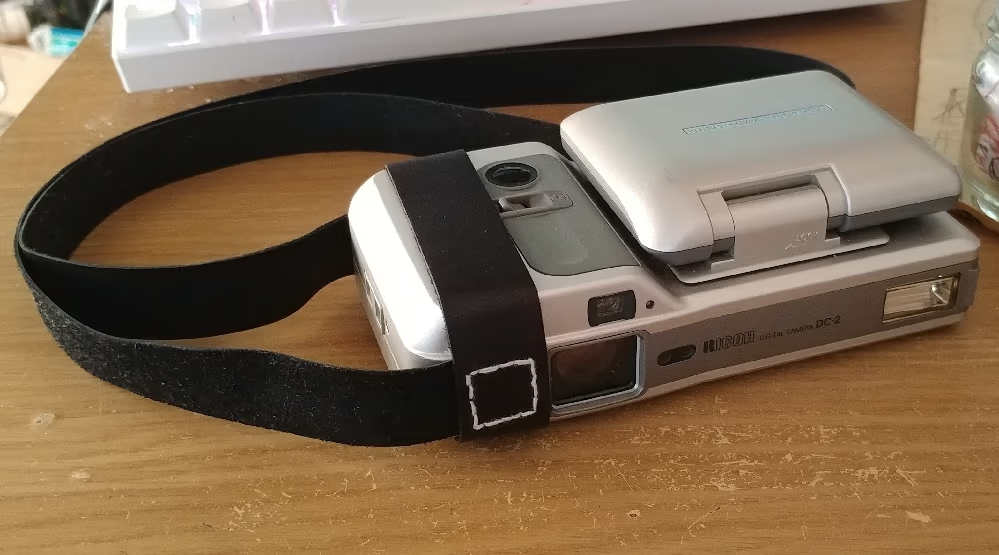
 Lens: 35mm f3.7/55mm 5.6
Sensor: 1/4" CCD
Shutter: Mechanical, 1/8-1/1000
File output: 768 x 576 24-bit .J6I files
Exposure: TTL, exposure compensation options
Playback: Detachable 1.8" TFT LCD
Battery: 4x AA, 2.1mm DC barrel jack
Storage: Internal 2MB flash, PCMCIA slot
Weight: 285g without batteries
Lens: 35mm f3.7/55mm 5.6
Sensor: 1/4" CCD
Shutter: Mechanical, 1/8-1/1000
File output: 768 x 576 24-bit .J6I files
Exposure: TTL, exposure compensation options
Playback: Detachable 1.8" TFT LCD
Battery: 4x AA, 2.1mm DC barrel jack
Storage: Internal 2MB flash, PCMCIA slot
Weight: 285g without batteries
The Ricoh DC-2 is a digital camera from June 1996, costing over $1000 at the time of its release. It features start-up noises that resembles an Epson office printer and a silhouette suitable for Yokohama Kaidashi Kikou. The DC-2E strips away the secondary 55mm lens, audio recording, flash, and is 10 grams lighter. Both accept PC cards up to 40MB that I use a CF card adapter in. It has NTSC out and an RS232 port that will stay unused until I gather enough courage to buy a Trinitron. The controls are surprisingly intuitive with the absence of gordian menu systems so ubiquitous later. Today the propreitary .J6I files can be opened with XnView MP, no Windows 95 required.
 the required goods
the required goods
For me cameras of this era lie at a sweet spot with eccentric camera design and redundant optical viewfinders. I like to walk around with the playback LCD stripped off.
The DC-1 was Ricoh's first digital camera featuring a removable hinging LCD that sticks onto the side of the camera. It uses inconvenient rechargable gumstick batteries. The DC-3 permanently fixes the TFT monitor on the camera and deletes the optical viewfinder. The DC-4 moves to the wacky design that everyone is familiar with. The DC-2 is easy enough to use but is plagued with a few issues.



In terms of cons the focus confirmation chime is identical to the photo taken chime. The shutter releases only after focus confirmation which makes it feel unresponsive. The battery door is fragile and it eats batteries. Unlike the DC-1 it doesn't record 5-second clips of video, only audio or photos with audio. There's no exposure readouts like most other consumers cameras of its age. Color balance can be changed between 3 settings but it's unintuitively unmarked and hidden away.


1996 is too early for normal looking images, every photo turns into a flat overcast day like you've just been jailed to Jeju or Aberdeen. The chromatic aberration and noise at all ISO levels makes it abundantly clear which era this camera is from. I vaguely remember using an old Olympus mju Fujifilm A210 that used XD cards 15 years ago but my standards must've been lower it took much better photos.
if I was an office worker in 1999 and I paid $1000 for this I'd start chimping out
 5/5/2023
(∩`-´)⊃━☆゚.*・。゚ back to top ⤴
5/5/2023
(∩`-´)⊃━☆゚.*・。゚ back to top ⤴
